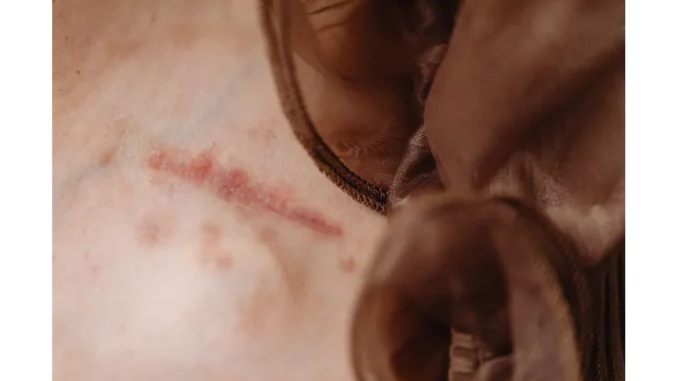
The market for laceration closure devices is poised for remarkable growth from 2024 to 2033, mirroring a broader trend of innovation and expansion within the medical devices industry. This sector, encompassing staples, hemostats, adhesives, sutures, strips, sealants, and mechanical wound closure devices, is projected to grow from $9.64 billion in 2024 to an impressive $12.89 billion by 2028, reflecting a compound annual growth rate (CAGR) of 7.5%. This upward trajectory highlights the escalating demand for effective wound management solutions across a diverse array of medical settings.
Several critical factors are fuelling the expansion of this market. Primarily, the global increase in surgical procedures is a significant driver. As the global population continues to age and medical technologies evolve, there is a notable rise in both elective and essential surgeries. This is particularly pronounced in the realm of cosmetic and plastic surgeries, where laceration closure devices play a crucial role in enhancing patient outcomes by minimising scarring and expediting healing processes. Furthermore, there is a growing prevalence of chronic wounds and injuries resulting from accidents and sports activities. This surge necessitates advanced wound care solutions capable of effectively managing and closing wounds, thereby mitigating infection risks and promoting swifter recoveries.
Technological innovations are at the forefront of this sector’s development, enhancing the effectiveness and efficiency of wound management. Companies are heavily investing in research and development to devise novel products that cater to varied wound closure requirements. The advent of skin closure variety packs, for instance, is transforming wound management practices. These packs, which include a range of products such as sutures, staples, and adhesive strips, offer healthcare providers the flexibility to select the most suitable closure device for each specific wound, thereby optimising patient outcomes. Moreover, the integration of cutting-edge technology in cosmetic and plastic surgeries is bolstering the demand for advanced laceration closure devices. These devices not only ensure superior wound closure but also improve the aesthetic outcomes of surgical procedures, a vital consideration for patients undergoing cosmetic surgeries.
Strategic mergers and acquisitions are also shaping the landscape of the laceration closure devices market. Companies are actively pursuing these strategies to broaden their product portfolios and fortify their market positions. A notable example is the acquisition of Peters Surgical SASU by Advanced Medical Solutions Group plc in March 2024. This strategic move was aimed at enhancing the company’s capabilities in tissue repair and skin closure. Such acquisitions enable firms to leverage complementary product lines and enhance their direct selling capabilities in pivotal markets, thereby strengthening their competitive stance.
Regionally, North America currently dominates the laceration closure devices market, spurred by a robust healthcare infrastructure and significant healthcare expenditure. However, the Asia-Pacific region is set to be the fastest-growing market during the forecast period. This anticipated growth is attributed to increasing healthcare investments, heightened awareness of advanced wound care solutions, and a burgeoning number of surgical procedures within the region. The market is segmented based on product type, wound type, and end-user. Product types include staples, hemostats, adhesives, sutures, strips, sealants, and mechanical wound closure devices. Wound types are categorised into acute, chronic, burns, ulcers, and surgical wounds, with primary end-users comprising hospitals, ambulatory surgery centres, and other healthcare facilities.
The laceration closure devices market is on the cusp of significant growth over the coming decade, driven by technological advancements, the rise in surgical procedures, and strategic industry collaborations. As healthcare providers continue to seek efficient and effective wound management solutions, the demand for innovative laceration closure devices is expected to remain robust. For companies operating in this market, a focus on continuous innovation and strategic partnerships will be essential to capitalise on emerging opportunities and maintain a competitive edge. With an emphasis on improving patient outcomes and enhancing wound care efficiency, the laceration closure devices market is poised to play a pivotal role in the future of healthcare.


Be the first to comment